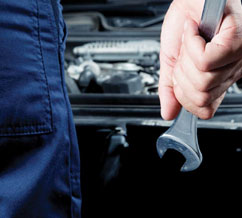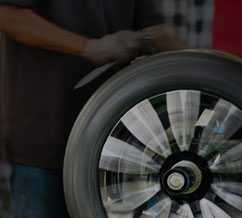Correct tyre inflation pressure is critical for good fuel economy, tread life and vehicle performance. We recommend checking your tyre pressures at least once a month. The recommended pressure for your vehicle is located on a sticker inside your driver-side door or noted in your owner’s manual.

The markings on the wall of your tyre may look like a secret code, but they tell you just about everything you need to know about the tyre – from the width, height and diameter of your tyre to the kind of vehicle the tyre was made for to the maximum speed it was designed for.

Got a puncture? We’re here to help. Call in anytime and our expert tyre fitters will have you back on the road in no time.
We also offer a call out service. If you can’t get to us, we will come to you with our emergency roadside and onsite service. Our mobile unit is fully equipped to deal with all types of tyre repairs and replacements on everything from cars to earthmoving equipment. Our professional and friendly team are only a phone call away with all of the advice and assistance you need to get your wheels turning again.

We recommend you check your tyre pressures regularly, once a fortnight is recommended and ideally when your tyres are cold. Under inflation of tyres can cause them to wear unevenly or rapid tread wear. You should also inspect tread and sidewalls for cuts and abrasions, bulges, unusual wear and road damage. Tyre wear on front wheel drive vehicles is a little higher and therefore, attention to tyre pressures as well as rotation should be made on a regular basis.

Having your tyres balanced is important not only to the safety of the driver but also for the performance of the car and the longevity of the tyre. Unbalanced tyres cause road vibration, which can lead to driver fatigue, premature tyre wear (also known as cupping or dipping) and unnecessary wear to your vehicle’s suspension.

Regular rotation is necessary to maintain even tread wear and get the most life out of your tyres. Check your owner’s manual for the manufacturer’s rotation recommendations. If no rotation period is specified, it is recommended that tyres be rotated every 10,000 km’s. Four-wheel drive vehicles may require rotation sooner.
